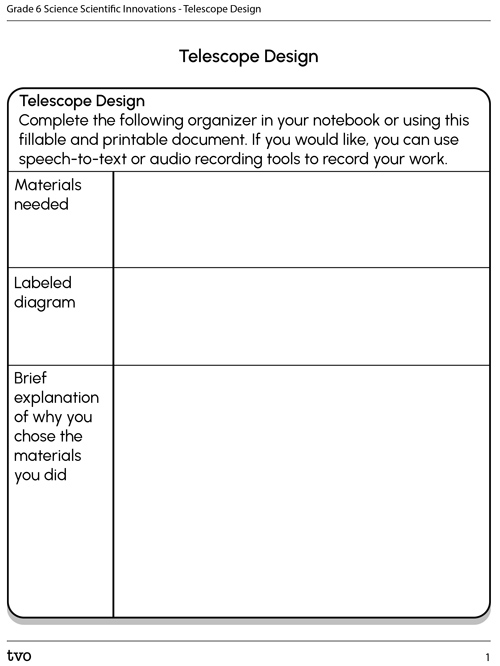Minds On
Innovation in Canada
This learning activity features emerging technologies, STEM contributions, and Canadian innovations that are making a difference.

Innovations on the Moon
In July of 1969, NASA’s Apollo 11 was the first human piloted spacecraft to land on the Moon. Since then, our understanding of this natural satellite and its relationship to our planet and the Sun has increased significantly. Now, scientists know enough about the moon that they believe it may play a key role in humans’ ability to travel and explore further into our galaxy, and someday even aid us in landing on Mars!
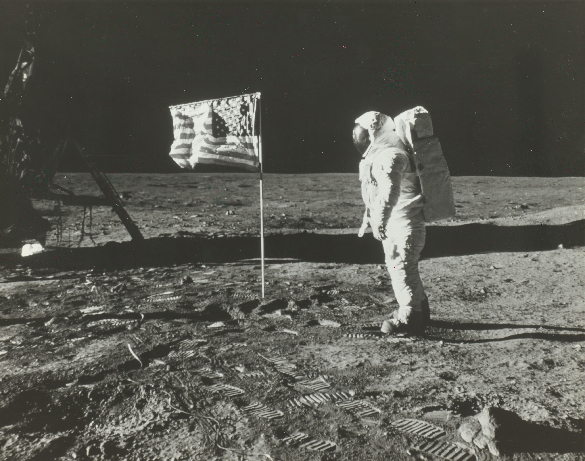
American astronaut Buzz Aldrin standing on the Moon, 1969.
Did You Know?
Did you know?
NASA is spearheading an international effort to create the Lunar Gateway – a small space station that will remain in the Moon’s orbit and allow astronauts much easier access to further study the Moon and space and hopefully be a steppingstone to Mars.
Canada is playing a very important role in the Lunar Gateway mission. Not only has Canada committed to creating the Canadarm 3, which will exist on the outside of the Lunar Gateway to receive incoming spacecraft, conduct external repairs and even assist with science experiments, but it has also committed to creating a Lunar rover for the upcoming Moon mission.
Explore the following video from the Canadian Space Agency to learn more about Canada’s proposed Lunar rover and the Moon. As you explore the video, using a method of your choice, record your learning and observations on the physical characteristics and environment on the Moon.
Action
Lighting up the night sky

When we examine the night sky, the objects that we observe are what scientists call celestial bodies. Some examples of celestial bodies include stars, planets, and the Moon. Celestial bodies are often organized into two groups based on their relationship with light: those that reflect light and those that emit light.
Press the following tabs to access definitions of the terms reflect and emit.
To reflect light means that the object does not produce light, instead, light is bouncing off of its surface.
To emit light means to produce and discharge (or shine) light.
Which of the following celestial bodies, observable in the night sky, emit light and which reflect light?
For each celestial body, decide if it is an emitter or a reflector of light. When you’re ready, flip the card to access the answer.
The Moon is a natural satellite and the brightest object that we, on Earth, can observe in our night sky. It is an example of a celestial body that reflects light. The Sun is actually what lights up the Moon and, depending on the Moon’s position in its orbit around the Earth, the Sun’s light will shine on different parts of the Moon making its illumination change every night. That’s what causes the phases of the Moon!
Examine the following animation to explore the eight different phases of the Moon.
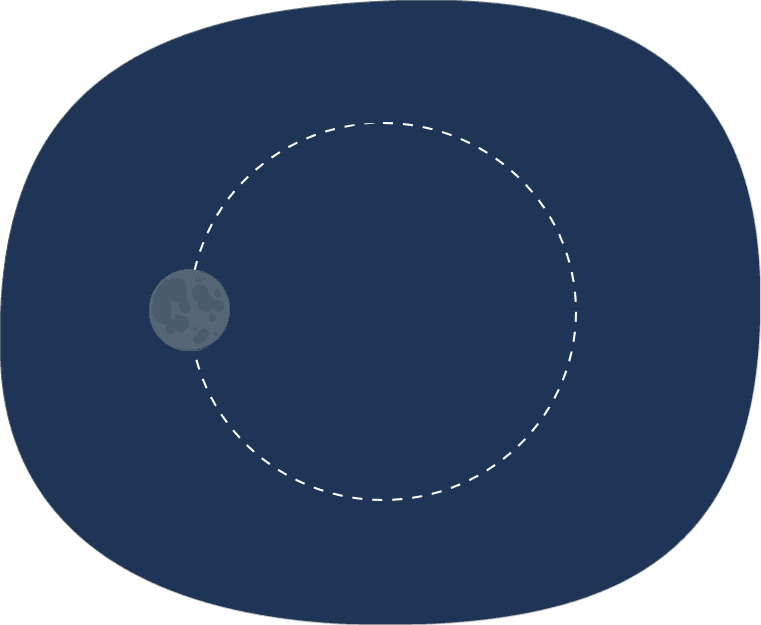
Eight different phases of the moon in succession: Starting with a New Moon, it is completely dark, with no Sun shining on it. The Sun gradually starts to cover the surface of the moon. The different phases are determined by the amount of the moon’s surface that is illuminated. At the Waxing Crescent phase, a small area of the right side is illuminated. The Sun continues moving across the moon’s surface. At the First Quarter phase, the right side is bright. The Sun continues moving so that most of the moon is bright, with only a small area of the left side in darkness. This is called the Waxing Gibbous. The next phase is called the Full Moon where it is completely covered by the Sun. The Waning Gibbons phase follows where the right side is now slightly in darkness. When half of the moon is in darkness, it is called the Third Quarter phase. The Sun continues to move until only a small area of the left side of the moon is bright; this is called the Waning Crescent phase. The Sun completes this cycle when the moon is in complete darkness again at the New Moon phase.
Did You Know?
Did you know?
Did you know that no matter where we are on the planet, we are always observing the same side of the Moon?!
Because the Moon spins on its axis at the same rate that it orbits around the Earth, this means that the same side is always facing us!
Can you identify the phases of the Moon?
For each question, select the correct answer, then press “Check Answer” to see how you did.
Lunar eclipses
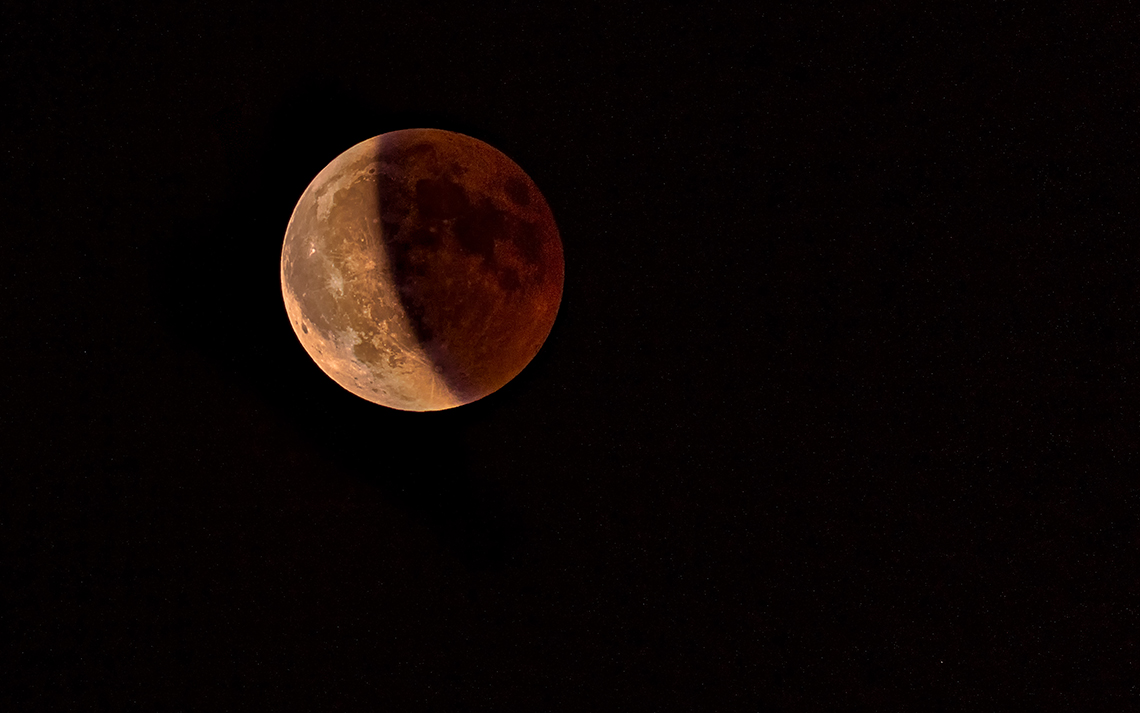
Another example that illustrates the Moon’s ability to reflect different amounts of light is a lunar eclipse.

The Sun, Earth, and Moon lined up in a row with the rays of the Sun being blocked by Earth preventing them for reaching the Moon. The Moon is centred in the Earth’s direct shadow, called the Umbra, which makes the side of the Moon facing Earth appear red. The peripheral sections of the Earth’s shadow are called the Penumbra – they extend above and below the Umbra section.
A lunar eclipse occurs when the Earth is positioned in between the Moon and the Sun in such a way that the Moon orbits through a shadow cast by our planet. A lunar eclipse can only happen during a full moon. Do you know why this is? (Hint: What about the phases of the Moon and their positions relative to the Earth and Sun?)
Press ‘Answer’ to access an explanation of why a lunar eclipse can only happen during a full moon.
Only during a full moon are the Sun, Earth, and Moon all aligned with the Earth in the middle of the other two celestial objects. This is why a lunar eclipse can only happen during a full moon!
Like a solar eclipse, there are different types of lunar eclipses:
- Total lunar eclipse – occurs when the Sun, Earth, and Moon are completely aligned, and the Moon is completely covered by the Earth’s shadow. The reduced light bouncing off of the Earth’s atmosphere is what gives the Moon it’s characteristic rusty orange or reddish colour.
- Partial lunar eclipse – occurs when the Sun, Earth, and Moon are not perfectly aligned, and only a part of the Moon is covered by Earth’s shadow.
- Penumbral lunar eclipse – the easiest type of lunar eclipse to miss because the Moon travels through the outer part of the Earth’s shadow, called the penumbra, which dims only a small section of the Moon.
Examine the following image that shows the shading of the Moon in each of the three types of lunar eclipses.

Three types of lunar eclipses: Total Lunar Eclipse – the Moon appears red/orange in colour. Partial Lunar Eclipse – a section of the Moon in shadow. Penumbral Lunar Eclipse–a very faint, small section at the side of the Moon is slightly dimmer than the rest of the Moon.
To examine a lunar eclipse in action, check out the following simulation. Can you identify the type of lunar eclipse featured?
Student Tips
Naming of eclipses
Check out this video to learn more about one specific type of lunar eclipse and how it got its eerie name!
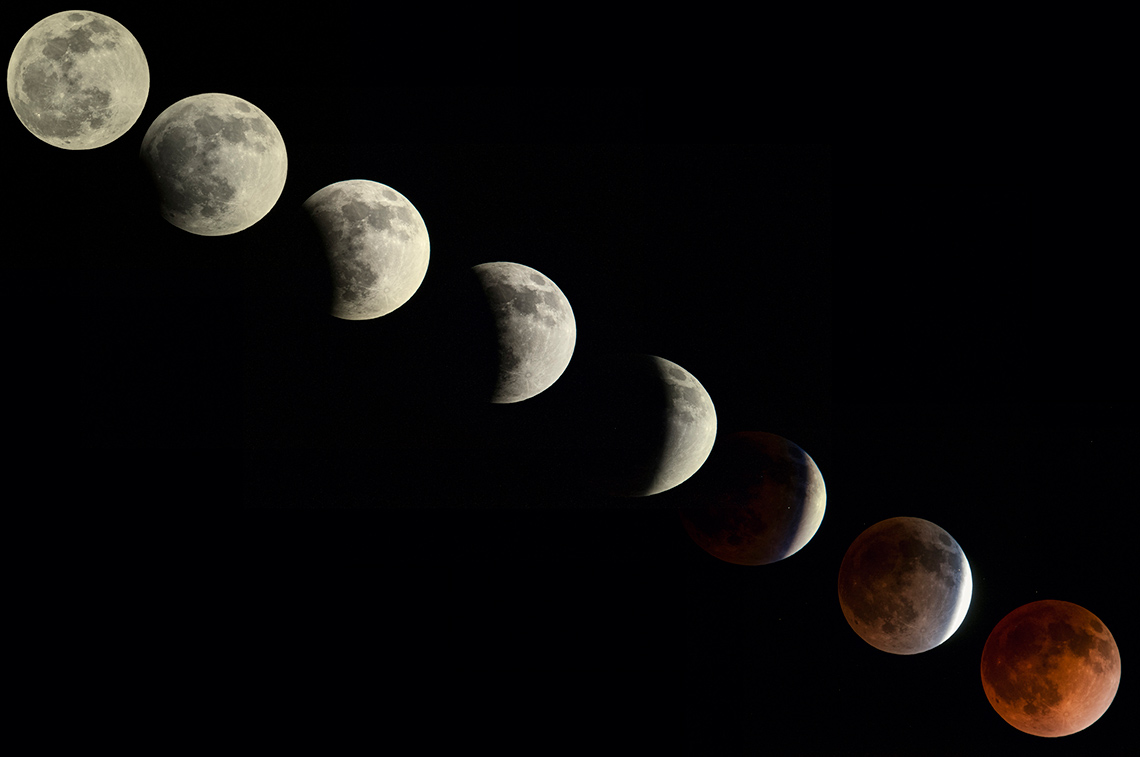
There are usually two lunar eclipses per year but occasionally you can have a year with up to 5 of them!
Unlike a solar eclipse, you can safely observe a lunar eclipse without any protective equipment. They are observable with the naked eye, but you may want to more closely examine this amazing phenomenon and you can do that by designing your own telescope!
Create your own telescope

What do you think it would require to design and build your own telescope using common and easily accessible materials?
Check out this video to learn about the steps of the Engineering Design Process before we continue.
For some inspiration and more background information on telescopes before you begin your design, access the following video by the Canadian Science and Technology Museum.
Safety
Before you explore the following experiment, let’s perform a safety check.
You may be using a hot glue gun if you build your prototype.
Be mindful of the temperature of the hot glue and the sides of the glue gun. Be sure to unplug it when you are done, and allow it to cool down completely before putting it away.
Complete the Telescope Design planner in your notebook or using the following fillable and printable document. If you would like, you can use speech-to-text or audio recording tools to record your thoughts.
Pause and Reflect
Reflecting on our work
Based on what you learned, why might the objects in your homemade telescope appear upside down? Include a sketch or diagram to illustrate your thinking.
If you were to use your telescope to observe the night sky, what celestial bodies do you think you’d be able to observe? Would changing the size of the lenses you used make a difference in what you are able to observe?
If you were to improve upon the design of your telescope, what would you do?
Consolidation
Journey to the Moon
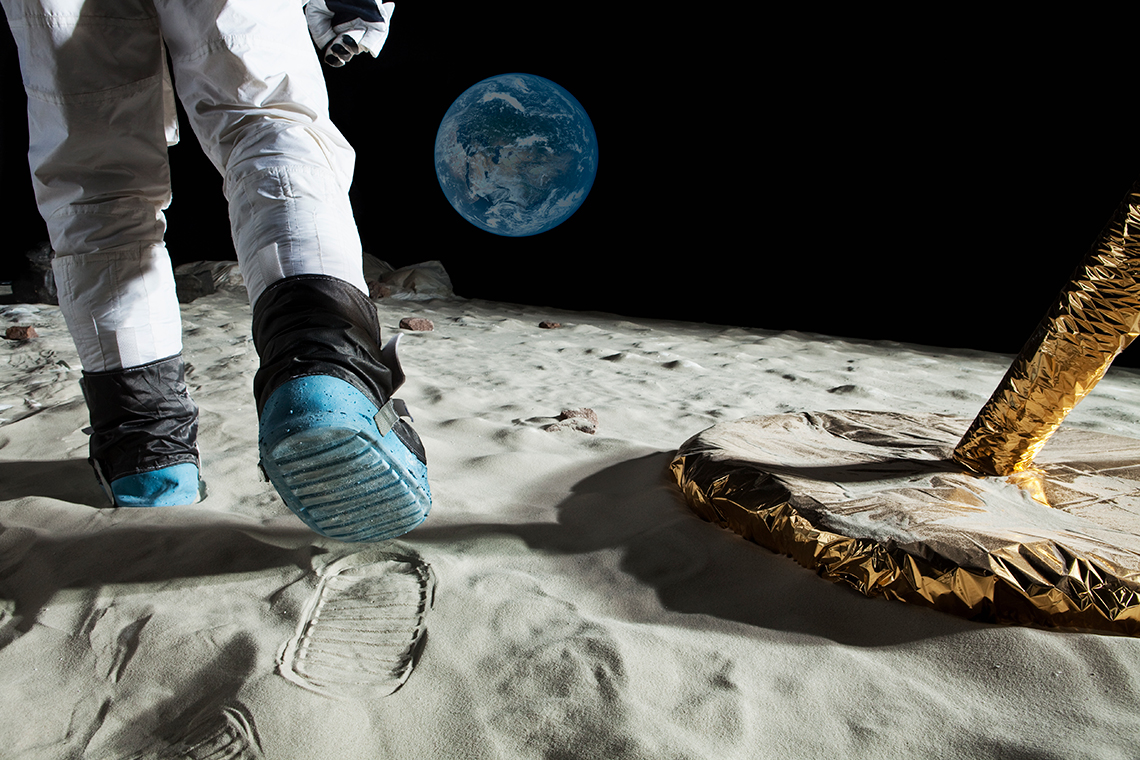
Imagine you are one of the first astronauts that will be travelling to the Lunar Gateway space station to observe and study our Moon.
Create an account of your experience exploring and studying the Moon. Consider sharing your account using one of the following methods:
- blog or vlog
- podcast episode
- graphic novel/short story or zine
- diary or journal entry
- another method of your choice
Don’t forget to describe what you observe about the Moon’s physical characteristics so that your audience feels like they are in the experience right along with you!
If possible, share your finished account with a partner so they can learn more about our planet’s natural satellite, the Moon!
Reflection
As you read through these descriptions, which sentence best describes how you are feeling about your understanding of this learning activity? Press the button that is beside this sentence.
I feel…
Now, record your ideas using a voice recorder, speech-to-text, or writing tool.
